Here’s a guide aimed at beginners to help them understand how to play Nido. It covers everything from the basic controls to both the obvious and hidden mechanics that are crucial for making progress smoothly. Además, it explains simple strategies for dealing with enemies and bosses, as well as how to perform basic combos and seize opportunities.
Player Controls
Core mechanic
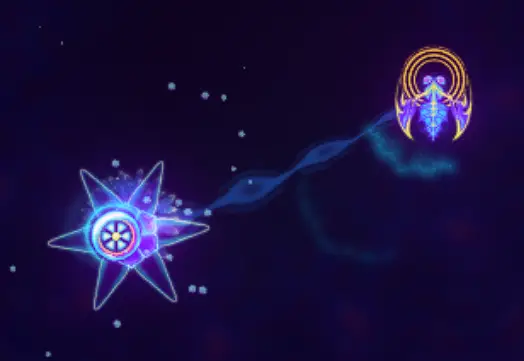
en el juego, you have control over both a Flower and a Wasp. You can navigate them using either both joysticks on a controller or WASD and the mouse. The configuration for which side controls which character can be adjusted in the settings.
The Wasp is nimble and swift, and it’s resistant to damage except for a few exceptions, which we’ll discuss later. It moves autonomously but is limited by a maximum distance it can stray from the Flower.
En cambio, the Flower is slow and sturdy, susceptible to damage from any source. Unlike the Wasp, its movement is only restricted by the boundaries of the arena.
To excel in this game, you need to adapt to this detached style of gameplay, mastering the ability to control both characters independently. Sin embargo, this is perhaps just the beginning of the many intricate mechanics the game has to offer.
Comportamiento
Each character in the game has its own designated Action button, which can be the bumpers/triggers on a controller or shift and mouse click otherwise. You can customize which character’s actions are triggered by the action button controlled by WASD in the settings.
Both characters possess two distinct actions, which are determined by whether the action button is held down or released, along with any directional inputs being held.
When the action button is held down for the Wasp, it transforms into a large, continuous blade, dealing damage to enemies and converting ichor (harmful red projectiles) into essence. Spinning drains the Wasp’s energy gradually, as shown by the yellow radial progress bar in its center. Once the Wasp’s energy is depleted, it cannot perform any actions until it recharges by returning to the Flower.
Releasing the action button for the Wasp stops its spinning, but if a direction is held, it executes a dash that inflicts damage upon enemies it collides with.
For the Flower, holding down the action button causes it to cease movement and enter a blooming state, creating a radius around it that reveals any weak points of enemies within it. While blooming, the Wasp’s speed increases both in flight and while spinning.
Releasing the action button for the Flower ends its blooming, but if a direction is held, it also performs a dash that grants a brief period of invincibility. It’s important to note that this action will harm the Flower.

Nota: When the Wasp recharges by touching the Flower, the Flower receives a small speed boost and heals faster. Utilize this strategically to keep both characters out of harm’s way.
Combat Basics
The fundamental concept revolves around the Wasp being the primary source of damage, while the Flower serves as a health tank. Sin embargo, this doesn’t imply that the Flower is incapable of defending itself. De lo contrario, with the Wasp’s assistance, the Flower can significantly increase its overall damage output. This collaborative approach is the recommended strategy for handling waves of enemies or challenging bosses.
Wasp Basics

When the Wasp eliminates an enemy or converts ichor, it accumulates essence around itself, indicated by stars encircling it. Essence can also be found scattered throughout the arena, which either character can manually collect.
Upon recharging, the Wasp deposits all the gathered essence, not only healing the Flower but also causing it to unleash blades that damage enemies. The longer the attack persists, the more potent the blades become. Por lo tanto, depositing more essence while the attack is ongoing extends its duration and consequently enhances its damage output!
Flower Basics

During the Flower’s attack, blades emanate from its center, spiraling outward to a maximum radius. Sin embargo, when the Flower is blooming and holding a direction, it concentrates all the blades to shoot towards that direction with a slight spread. This focused attack is exceptionally potent and can swiftly dismantle bosses!
Enemy basics

Most enemies possess a shielded weak point that must be marked by the Flower to be permanently exposed for the Wasp to eliminate. De lo contrario, they remain impervious to damage. It’s worth noting that the Flower’s bloom can inflict damage on certain bugs, although the damage output is minimal.
That summarizes the core of the combat loop:
- Keep the Flower away from foes, or bring it close if you need to mark them.
- Attack enemies with the Wasp to collect essence.
- Deposit essence to activate the Flower’s attack and healing.
- Repeat this cycle to maintain control and effectiveness in combat.
Advanced Combat Mechanics
While each character possesses unique mechanics to progress through the game, they can also interact with each other, introducing additional mechanics that serve specific purposes. Note that most of these are already listed in the Tips panel within the game.
Bounces
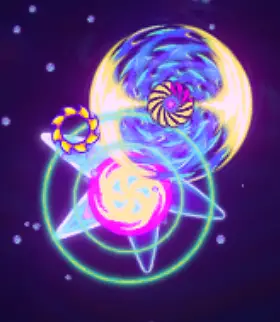
When the Wasp touches the Flower while spinning, it bounces off the Flower. When enemies are nearby, the Wasp automatically bounces towards the closest target. It’s important to note that the Wasp moves faster when the Flower is blooming, making this a useful mechanic for dealing with groups of shielded enemies. Sin embargo, any essence the Wasp may be carrying will not be deposited during this interaction.
Echo blades

Executing a bounce while the Flower is holding a direction and blooming results in the Flower emitting a trio of blades in the desired direction, which travel a considerable distance. This maneuver is recommended for targeting distant critters or bosses with hard-to-reach weak points. Ten cuidado, aunque, as performing this action damages the Flower.
Blink dash

When the Wasp dashes through the Flower, it propels the Wasp further and creates a substantial area of effect that damages enemies.
Bloom dash

Similar to the Blink Dash, but performed while the Flower is blooming. It boasts an increased area of effect and deals more damage. Sin embargo, executing this action damages the Flower, unless essence is present, which cancels out the damage.
Mastering these mechanics and deploying them strategically will unlock opportunities for achieving high scores in the game!
enemigos
NIDUS features a diverse array of enemies, each with unique quirks and behaviors. Sin embargo, some share common characteristics, allowing them to be categorized into the following groups.
Small Bugs
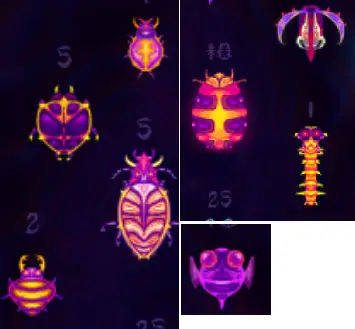
These bugs are easily dispatched without the need for marking. It’s advisable to gather them tightly and let the Wasp eliminate them swiftly. Alternativamente, if essence is available, the Flower’s blades can take them out. Sin embargo, be wary of Flower-relative bugs that do not follow the Flower’s movement and must be dealt with quickly before they reach it.
Regular Bugs
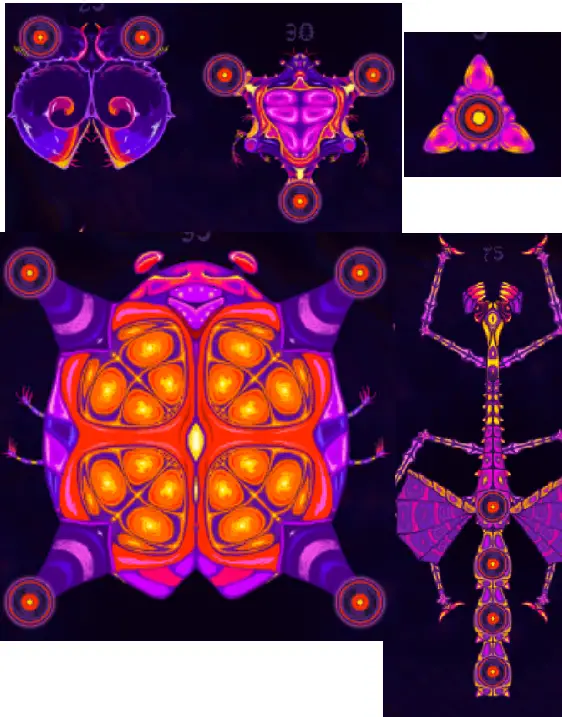
While these bugs can also be eliminated without marking, their larger size and unique mechanics, such as spawning smaller bugs or causing explosions, require careful consideration in your strategy. Dodging their attacks and seizing opportunities to eliminate them is the best approach.
Shielded Bugs

These bugs cannot be killed unless they are marked by the Flower, and some require specific strategies for efficient elimination:
- Caterpillar: Manipulate it around the Flower, bloom, and dash away, then finish it off with the Wasp. Note that its speed increases as it loses weak points.
- Hormiga: Approach it from the sides or behind, as its turning radius is high.
- Piercer: Approach it from the side and quickly create distance, as its extended tongue poses a threat.
- Triplet: Enter its triangle, bloom, and dash away to mark all segments, then finish it off with the Wasp.
Wasp Killers

These enemies possess the ability to drain the Wasp’s energy, forcing it to retreat back to the Flower to recharge. They must be handled with caution:
- Estrella de mar: While generally harmless, they can be killed by the Flower alone. Once marked, they transform into a harmless sphere.
- Great Starfish: These are particularly troublesome due to their size and moving tendrils. You can strategically target weak points with the Wasp or use the Flower to destroy them. Once all segments are destroyed, they become harmless.
- Piercer: A formidable adversary that requires careful attention.

Notas importantes:
- Defeating any enemy will spawn a Nymph, cual, when bloomed, assists the Wasp in dealing damage. Sin embargo, if left untouched for too long, it will despawn.
- Eliminating a spawner bug before its first spawn will result in the spawning of scarab bugs. Keep an eye out for their distinctive scarab design before it’s too late.
jefes
Nido’ progression unfolds across a series of «mundos» that players can choose to explore, each culminating in a boss battle. The first world always serves as a tutorial.
Upon defeating a boss, players can opt to upgrade either the Flower or the Wasp with incremental levels. Upgrading the Flower adds additional flower shields circling it, while upgrading the Wasp enhances its damage output. Following an upgrade, players can select from five realms to conquer, each featuring a visible boss when approaching the weak point.
It’s important to note that once a boss is defeated, it cannot be fought again, and subsequent bosses become slightly more challenging. The final boss encountered will be Exalted!
Calyx

- Provides an introduction to boss mechanics, with an initial egg that must be broken before engaging the actual boss.
- Not generally considered a significant threat, but its leaf spiral attack speeds up as its health decreases.
Hoplite
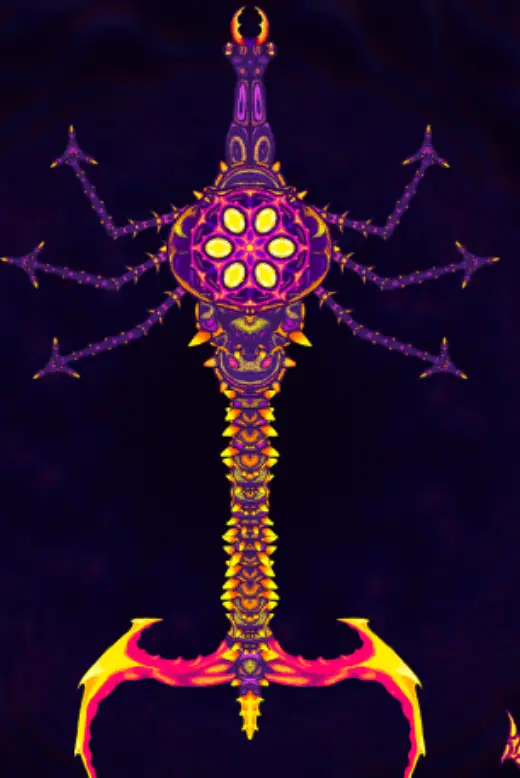
- Located at the top of the realm list, this is the first serious boss for most players.
- Attacks include projectile spewing and tail attacks targeting the Flower, with a constantly exposed weak point.
- Challenges players to dodge attacks and learn common patterns.
Gigant

- Located at the top right of the realm list, this boss’s sheer size and sharp legs can be intimidating.
- Its second phase introduces Wasp-killing tendrils extending from its eye sockets as its abdomen weak point is exposed.
- Tests players’ ability to maneuver the Wasp and make quick decisions.
Tétrada

- Found at the bottom right of the realm list, this boss is an extension of the Triplet enemy, with four segments instead of three.
- Each segment rotates and emits projectiles both outward and inward.
- Challenges players to protect the Flower and capitalize on opportunities.
Heraldo
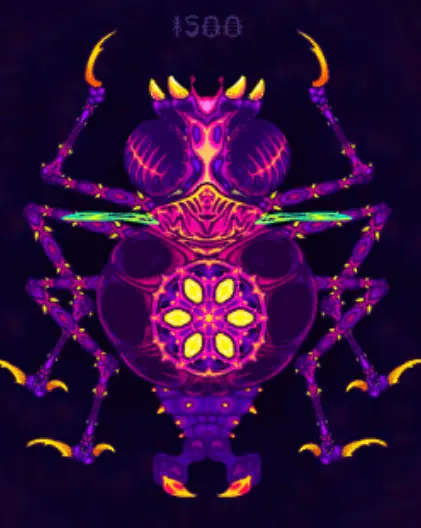
- Located at the bottom left of the realm list, this boss presents chaotic attacks ranging from projectile spawning to Flower chasing.
- Offers ample opportunity to collect essence as it moves around the arena.
- Tests players’ ability to make quick decisions and set up significant attacks.
alma en pena
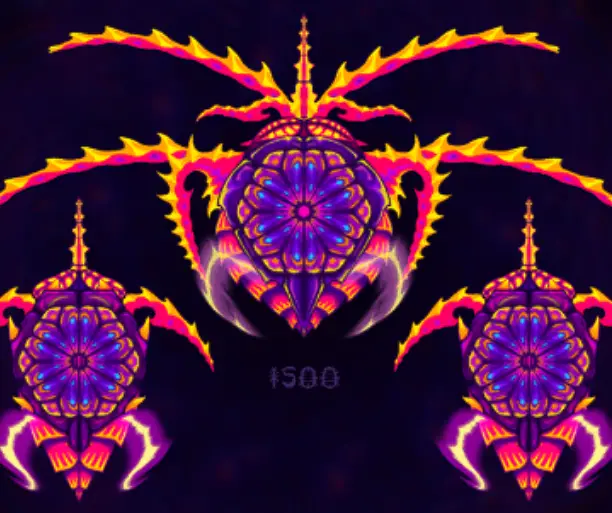
- Located at the top left of the realm list, this boss is formidable, with multiple segments each housing a weak point.
- Destroying a weak point causes the respective segment to split off and periodically attack the Flower.
- Tests players’ ability to deal damage swiftly and efficiently.
Zenith
- Para ser actualizado.
Exalted bosses
- The strongest form of bosses, with weak points surrounded by Wasp-killing tendrils, necessitating blooming before attacking.
- Forces players to take risks and engage in close-quarters combat.
Nota: If a boss battle lasts too long, invincible mosquitoes will spawn and attack the Flower!
Scoring
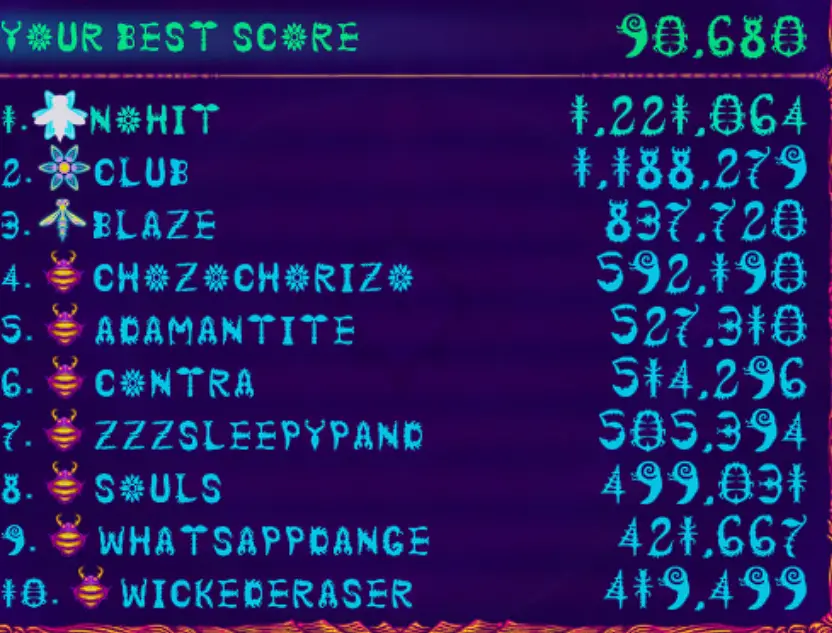
NIDUS employs a relatively simple scoring system, with a few notable exceptions:
Agujas: Killing enemies or bosses rewards points as listed in the gallery. Depositing essence also grants points based on the fire duration.
Combo System

- Depositing essence fills the combo meter, which raises the Flower combo level. While the combo is active, earned points are multiplied accordingly.
- Once combo level 6 is reached, the Flower shines, and the combo maxes out at 21. Filling the combo meter beyond this point spawns a butterfly to collect, granting essence and extra points.
- The combo resets if the Flower takes damage from enemies but not from actions by the Wasp or the Flower itself.
Momento

Each wave has a set idle time, indicated by a red spark progressing through transparent flowers outside the arena boundary. When all flowers are disabled, the next wave begins automatically. Sin embargo, if all enemies are defeated before the idle time expires, Fairyflies spawn, granting essence and points. Quick completion is essential for speed run leaderboard rankings.
Dificultades

NIDUS offers four difficulty options: Resiliente, Delicado, Frágil (unlocked after completing Delicate), and Brittle (unlocked after completing Fragile). These options adjust the Flower’s health and the score multiplier. Lower difficulties provide easier gameplay but yield lower rewards. In Brittle mode, a single hit ends the run, adding an intense challenge for players seeking the ultimate test of skill and precision.
Routing
In NIDUS, routing—the process of planning the optimal path through waves—is crucial for achieving high scores. Given the consistent wave layouts, players can strategize by prioritizing targets based on their preferences and executing actions accordingly. Por ejemplo, prioritizing the elimination of small bugs first, then focusing on Wasp killers, and addressing shielded bugs afterward if they are nearby can optimize efficiency. La flexibilidad es clave, allowing players to adapt their routes as needed to accommodate changes in enemy behavior or random events, ensuring a dynamic and engaging gameplay experience.
Eso es todo lo que estamos compartiendo hoy para este Nido guía. Esta guía fue originalmente creada y escrita por Baya. En caso de que no actualicemos esta guía, puede encontrar la última actualización siguiendo este enlace.
